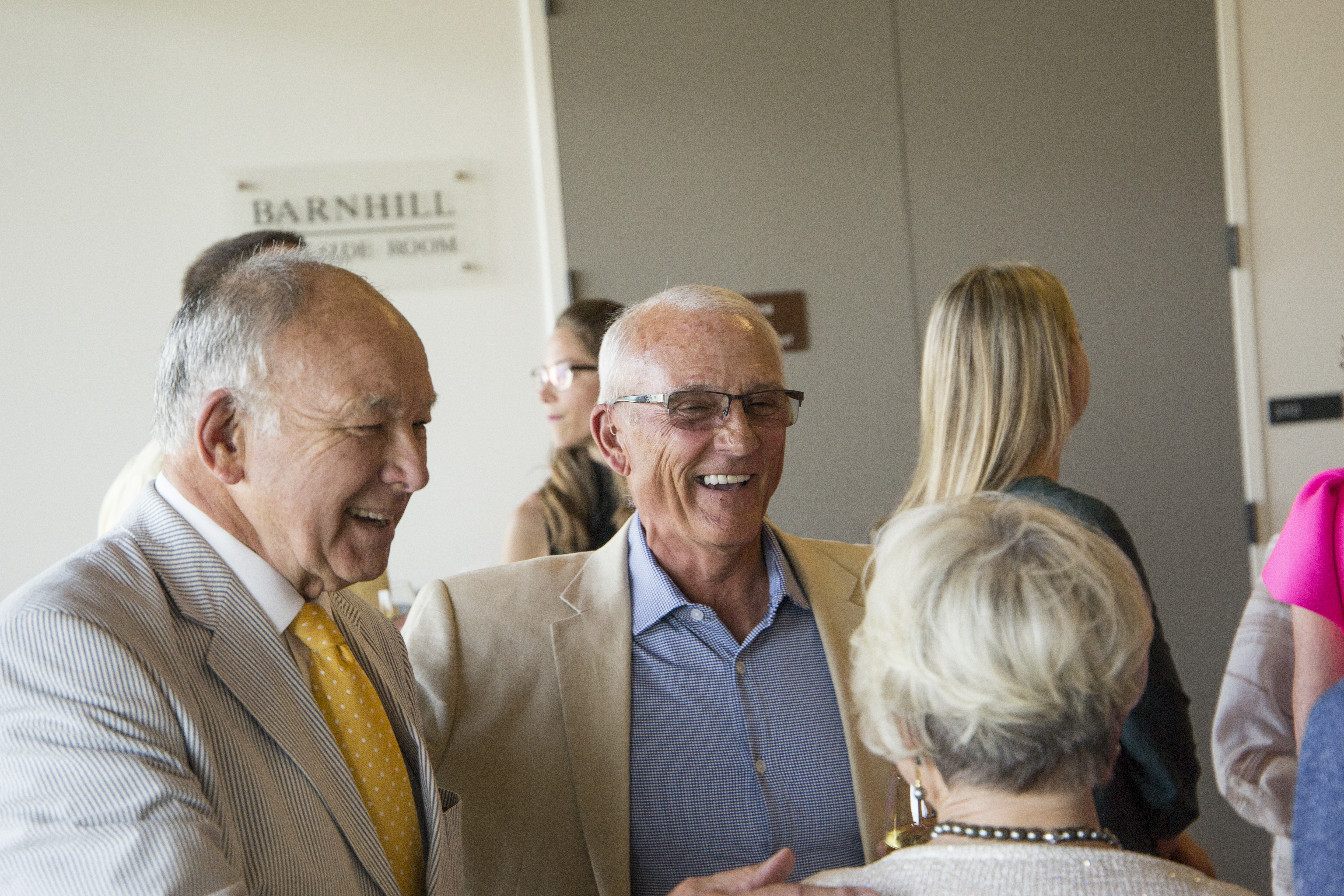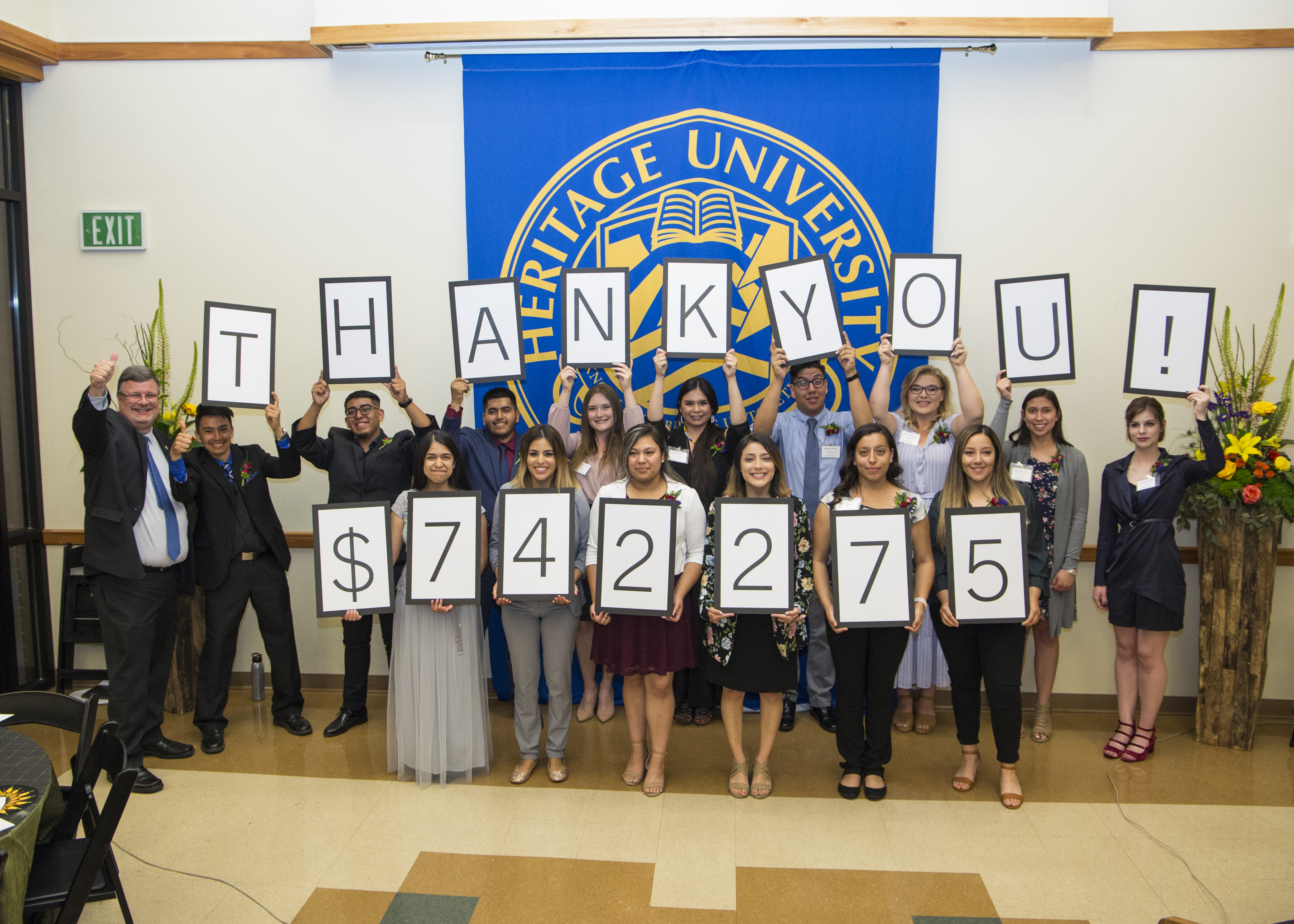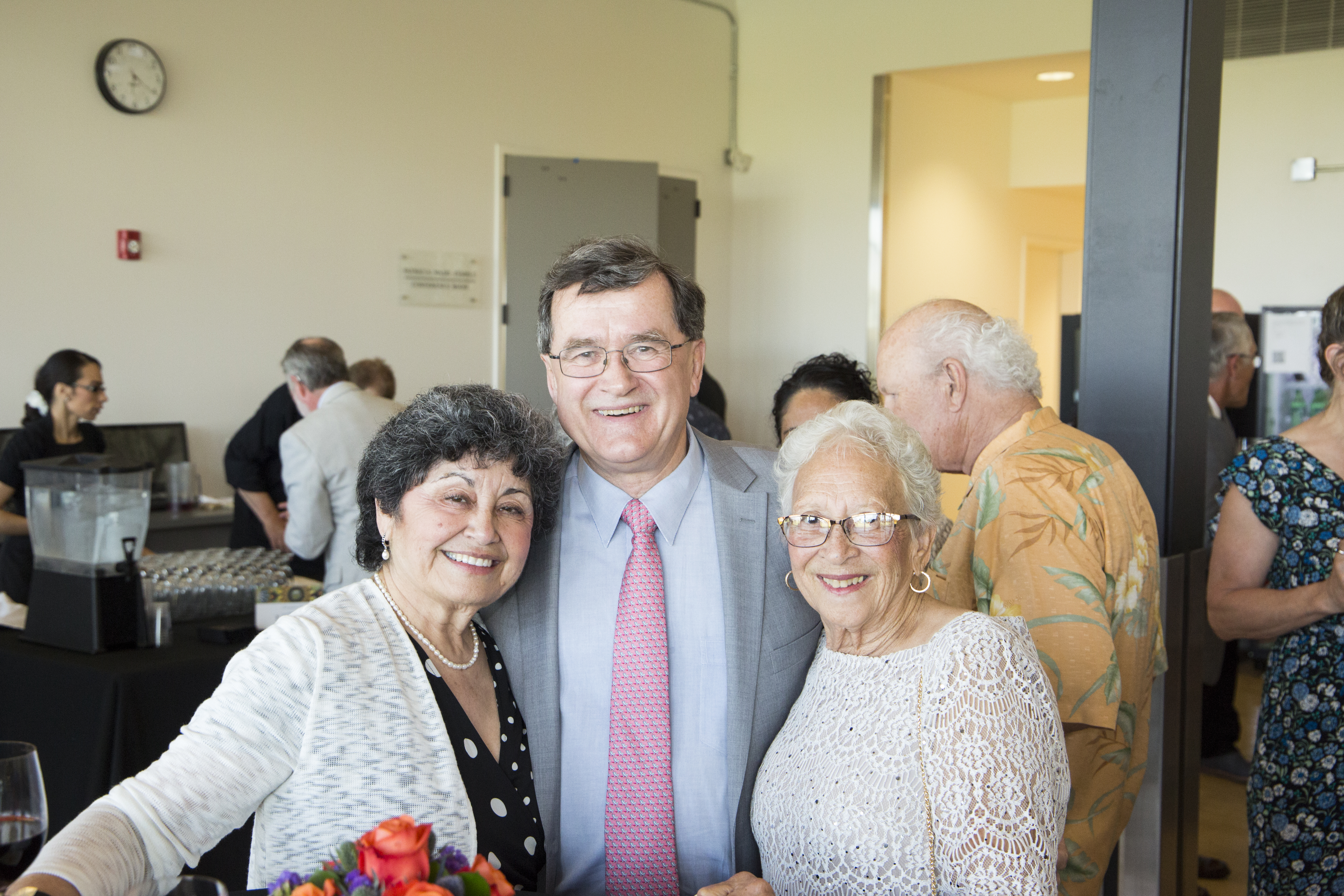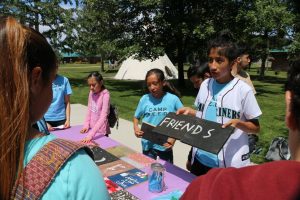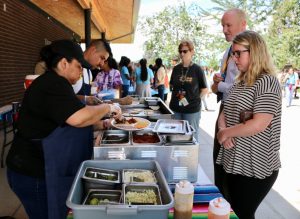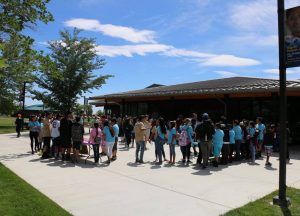Bountiful Giving and Grateful Hearts
Nearly three-quarters of a million dollars! That is what Heritage’s generous donors contributed to support student scholarships in a single night at the 33rd annual Bounty of the Valley Scholarship Dinner.
“Scholarship Dinner is one of the most magical evenings of the year,” said David Wise, vice president for Advancement. “I say this all the time; Heritage is truly blessed with some of the most gracious and generous friends and donors. The work we do here at this university simply would not be possible without their continued commitment. Some of our most ardent supporters come year-after-year, for 10, 20 even 30 years in a row, to be part of this great event that celebrates our students and ensures that they, and future generations of students, can access a quality college education here in the Yakima Valley. Their commitment to this institution and our students is truly heartwarming and humbling.”
The event brought 250 people to the university campus on the first day of June, and raised a total of $742,275 in gifts that came in through a combination of sponsorships, table sales and paddle raises. This brings to the total raised since its inception to more than $7-million.
“One of the things that makes this so beautiful is who is giving,” said Wise. “Most universities have a deep alumni base that stretches over many generations, and their alums are by far their greatest source of contributions. Heritage is a young institution. We do not have that same luxury. Our donors are, for the most part, complete strangers to the students in whom they are investing. They give to Heritage, to our students, because they believe in the power of education, in the ability of Heritage to deliver that education, and in our students’ capability to succeed, graduate and make a real difference in the world.”
The event, with its gourmet meals, fine wines and attention to details, has a reputation for being one of the premier dinners of its kind in the Yakima Valley. Local favorite Gasperetti’s Gourmet Restaurant catered the four-course meal, and O Wines and Columbia Crest provided the wine. An original piece of artwork by Central Washington artist Rich Kimura—a work created from folded vintage fruit labels that is a cross between origami and a kaleidoscope image—set the feel for the evening. And of course, the students themselves take the starring role, hosting the evening and sharing their stories with the guests.
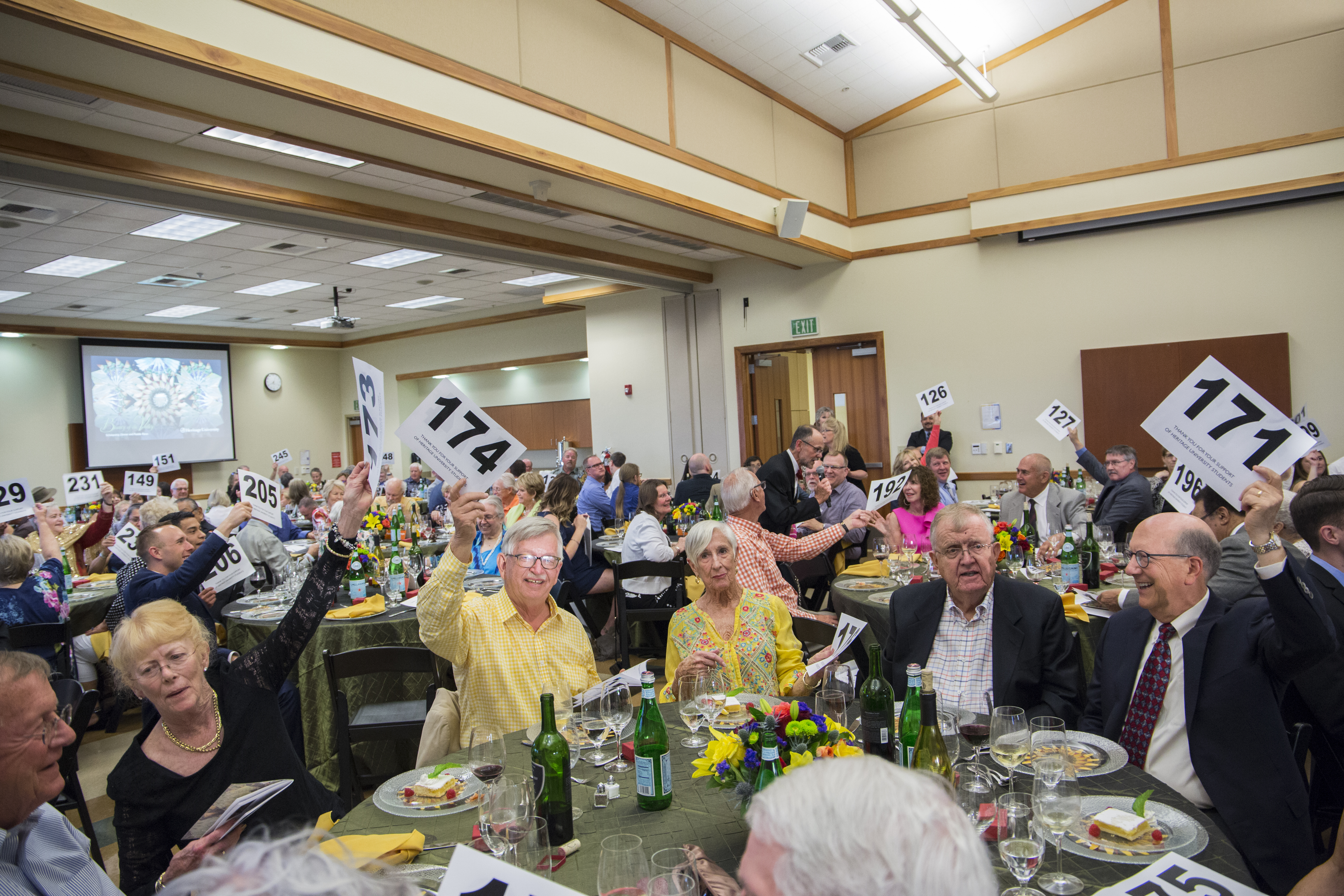
Guests raise their numbers high to make their gifts during the paddle raise at the end of the evening.
